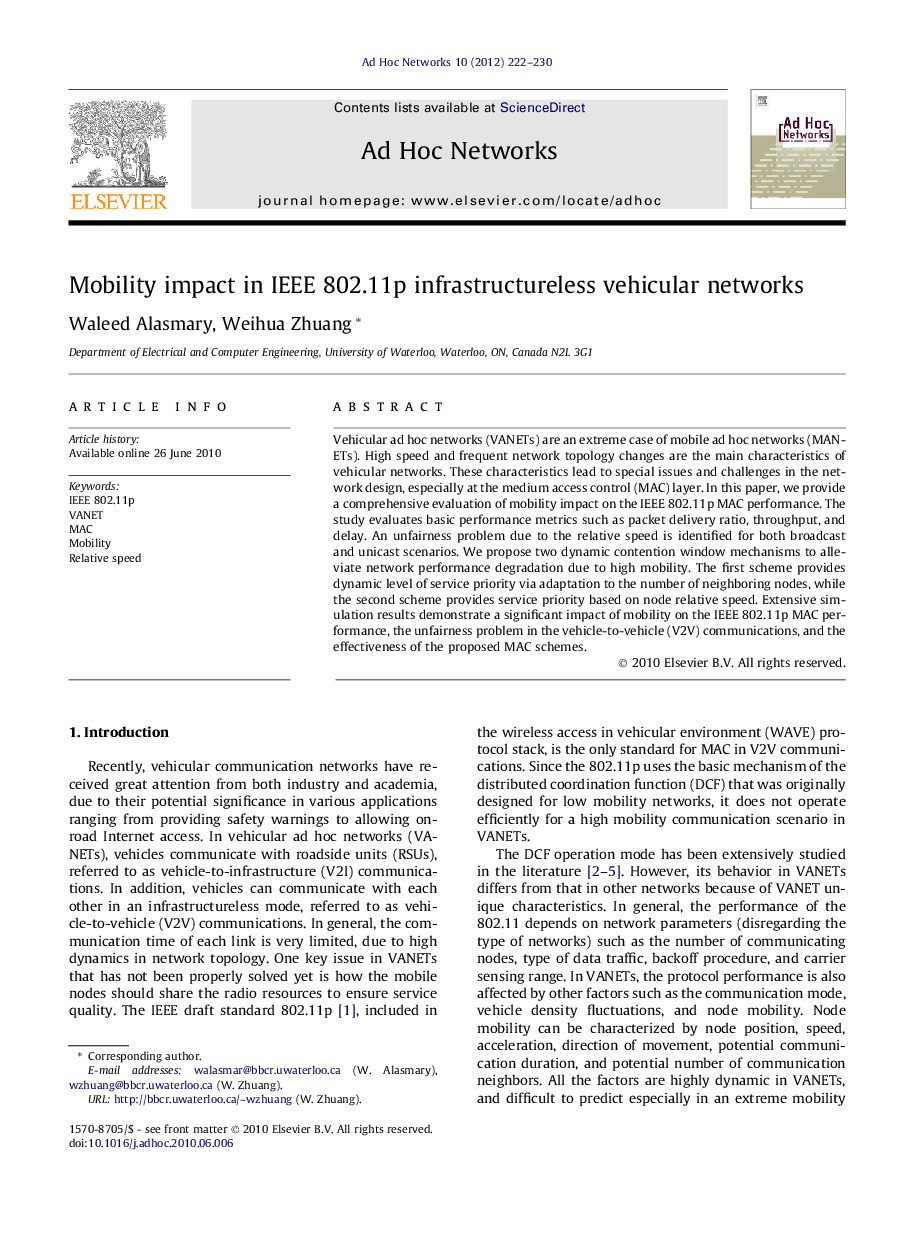| Article ID | Journal | Published Year | Pages | File Type |
|---|---|---|---|---|
| 444576 | Ad Hoc Networks | 2012 | 9 Pages |
Vehicular ad hoc networks (VANETs) are an extreme case of mobile ad hoc networks (MANETs). High speed and frequent network topology changes are the main characteristics of vehicular networks. These characteristics lead to special issues and challenges in the network design, especially at the medium access control (MAC) layer. In this paper, we provide a comprehensive evaluation of mobility impact on the IEEE 802.11p MAC performance. The study evaluates basic performance metrics such as packet delivery ratio, throughput, and delay. An unfairness problem due to the relative speed is identified for both broadcast and unicast scenarios. We propose two dynamic contention window mechanisms to alleviate network performance degradation due to high mobility. The first scheme provides dynamic level of service priority via adaptation to the number of neighboring nodes, while the second scheme provides service priority based on node relative speed. Extensive simulation results demonstrate a significant impact of mobility on the IEEE 802.11p MAC performance, the unfairness problem in the vehicle-to-vehicle (V2V) communications, and the effectiveness of the proposed MAC schemes.
